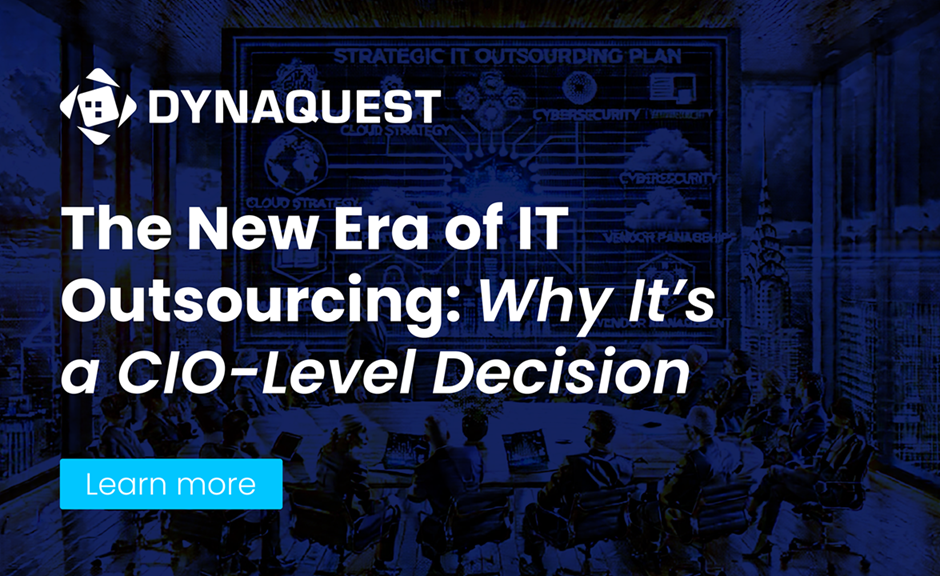
The New Era of IT Outsourcing: Why It’s a CIO-Level Decision
In today’s hyper-competitive, always-on digital economy, IT outsourcing is no longer a backstage cost-saver—it’s a frontline strategy shaping how businesses compete, scale, and innovate. For CIOs navigating cloud migrations, AI integrations, and cybersecurity threats, outsourcing has become a powerful lever to accelerate transformation without overburdening internal teams.
It’s not just about doing more with less—it’s about doing smarter, faster, and globally connected. The decision to outsource is no longer operational—it’s architectural, shaping the future of enterprise tech from the C-suite outward.
According to Grand View Research, the global IT services outsourcing market was valued at $525.6 billion in 2023, and it’s projected to grow at a CAGR of 8.5% through 2030. This shows a definitive shift in how organizations perceive outsourcing—from transactional delegation to strategic enablement.
Modern CIOs are now expected to lead the charge in selecting partners, architecting vendor relationships, and aligning outsourcing efforts with long-term IT strategy. This means understanding not just the operational details, but the enterprise-wide impact—on culture, agility, security, and talent development.
One standout case is the BPO industry in the Philippines, where CIOs of global firms increasingly rely on Filipino IT specialists not just for customer support, but for DevOps, systems integration, and cloud migration projects. The country’s 97.2% literacy rate, high English fluency, and strong cultural compatibility with Western markets make it a compelling destination.
Defining the Scope: What Kind of Projects Should Be Outsourced?
Before outsourcing begins, CIOs need to determine which projects are strategic enough to be handled in-house and which are suitable for external execution.
Here’s a simplified breakdown:
| Ideal for Outsourcing | Better Kept In-House |
| Mobile & Web App Development | Projects requiring proprietary IP |
| Cloud Infrastructure Migration | Strategic architecture planning |
| QA Testing & Bug Fixing | Experimental R&D or innovation labs |
| IT Helpdesk & End-User Support | Core system administration or security ops |
| System Integration Projects | High-sensitivity compliance management |
Outsourcing is not a binary decision. Hybrid models are gaining traction, where part of a project—such as the front-end interface—is outsourced, while the back-end remains internal. This kind of modular approach helps CIOs manage risk while still benefiting from cost efficiencies and speed.
An example from the Philippines includes Accenture’s Manila-based delivery center, which handles global service desk operations for Fortune 500 clients. Yet those clients keep critical infrastructure oversight in-house, forming a dual-layer model that’s both agile and secure.
Risk vs. Reward: The Dual-Sided Nature of IT Outsourcing
Every outsourcing decision comes with an inherent risk-reward equation. A well-chosen vendor can accelerate timelines, reduce costs, and deliver top-tier innovation. A misstep, on the other hand, can result in IP theft, missed deadlines, or even reputational damage.
Here’s a risk-reward comparison matrix CIOs often refer to:
| Potential Risk | Strategic Reward |
| Loss of control over project direction | Access to niche or specialized expertise |
| Data privacy and regulatory concerns | Scalability without hiring bottlenecks |
| Communication breakdown across time zones | Faster time-to-market for product releases |
| Hidden costs from change requests | Reduced operational costs (avg. 30% savings) |
| Vendor lock-in or poor exit strategy | Flexible access to global talent |
A new perspective is “risk inversion”: Rather than asking “What can go wrong?”, forward-thinking CIOs are asking “What risks do we face if we DON’T outsource?”. These include tech debt accumulation, talent shortages, and lack of agility compared to competitors who are actively leveraging global delivery models.
Take Telstra, Australia’s largest telecom company. It partnered with a Filipino BPO for application development support, reducing costs by 40%, but more importantly, enabling 24/7 deployment cycles through timezone shifts—something impossible with its domestic-only team.
Global vs. Local Vendors: What Should Guide Your Choice?
A common debate among CIOs is whether to choose a global (offshore) vendor, a regional (nearshore) vendor, or a local partner. Each comes with its own strategic implications.
| Vendor Type | Pros | Cons |
| Offshore (e.g., Philippines, India) | Cost-effective, vast talent pools, 24/7 coverage | Time zone and cultural differences, IP security concerns |
| Nearshore (e.g., Mexico, Eastern Europe for U.S.) | Better time overlap, moderate cost savings | Smaller talent pool, potential political instability |
| Onshore (domestic vendors) | Easier communication, strong regulatory alignment | Highest cost, limited scalability |
The Philippines continues to thrive in offshore delivery. As of 2024, the country employs 1.57 million workers in the BPO industry, with a rapidly growing segment in IT services, software development, and analytics, per the IBPAP (IT & Business Process Association of the Philippines).
CIOs looking for round-the-clock development cycles or cost-arbitrage advantages will find the Philippines an excellent starting point. Those with heavy compliance needs might still prefer regional or local vendors for sensitive projects.
Compliance, Privacy & Security: The CIO’s Legal Checklist
Arguably the most non-negotiable area in outsourcing is legal compliance. CIOs are expected to ensure airtight processes for data protection, regulatory adherence, and vendor accountability.
Here’s a core legal checklist to guide decisions:
Data Residency Laws: Ensure vendors understand where customer data can be stored and processed.
GDPR / HIPAA Compliance: Mandate certifications and audits for regulated industries.
Confidentiality Clauses: Non-disclosure and non-compete terms should be ironclad.
IP Ownership: Clearly define who owns the work product.
Exit Clauses: Design clean exits without business disruption.
Third-Party Risk Assessments: Regularly evaluate your vendor’s subcontractors. The Philippines’ Data Privacy Act of 2012, modeled closely after the GDPR, adds another layer of comfort for Western companies. Reputable vendors like TaskUs, Teleperformance, and Concentrix are known for tight compliance practices and international certifications such as ISO/IEC 27001.




